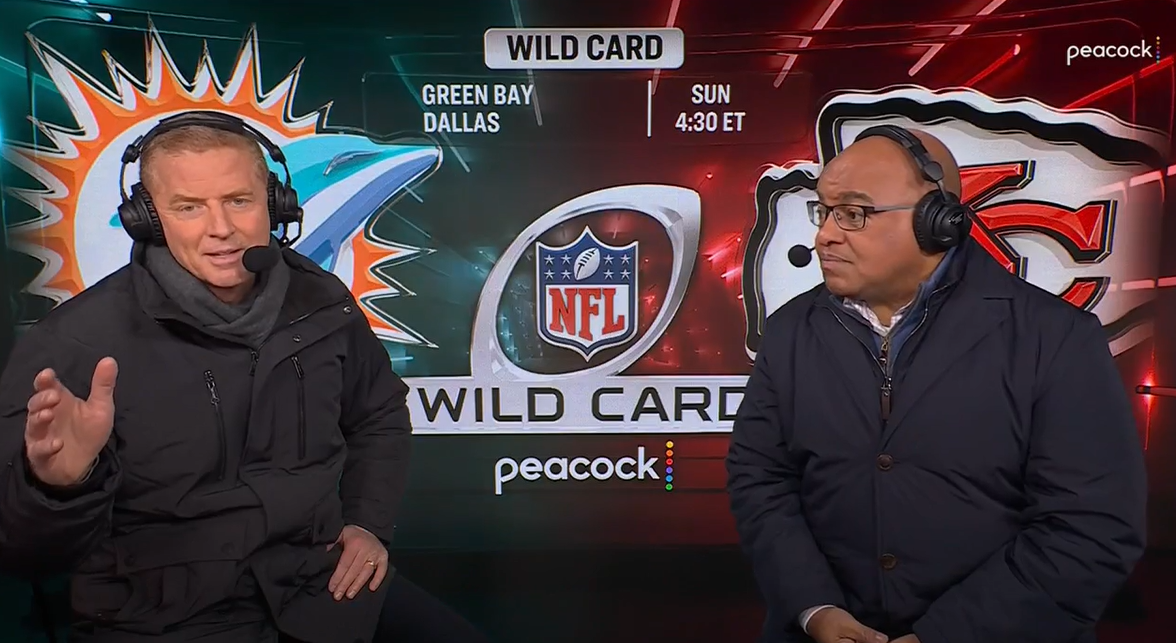There’s a new Super Bowl viewership record, with that coming three months after the game. Fox Sports announced Tuesday that a Nielsen review of the audience for February’s Kansas City Chiefs’ Super Bowl LVII win over the Philadelphia Eagles has seen that average viewership rise from the initially-reported 112.9 million to 115.1 million viewers. That’s an all-time record for any U.S. broadcast, beating the 114.4 million NBC drew in 2015 for the New England Patriots’ win over the Seattle Seahawks in Super Bowl XLIX:
Today, Nielsen restated the viewership for FOX Sports’ presentation of Super Bowl LVII as 115.1 million viewers – the most-watched Super Bowl in history. This revision is the product of a thorough review by Nielsen that revealed irregularities in the encoding that enables… pic.twitter.com/cZV5TysadX
— FOX Sports PR (@FOXSportsPR) May 2, 2023
Here’s the full text of the Fox tweet there:
“Today, Nielsen restated the viewership for FOX Sports’ presentation of Super Bowl LVII as 115.1 million viewers – the most-watched Super Bowl in history. This revision is the product of a thorough review by Nielsen that revealed irregularities in the encoding that enables Nielsen’s measurement of TV viewing as well as issues with the out-of-home measurement of Super Bowl LVII.”
This comes after Fox EVP and Head of Strategy & Analytics Mike Mulvihill said ahead of Super Bowl LVII he was confident the Eagles-Chiefs matchup would be well up from Super Bowl LVI’s Los Angeles Rams – Cincinnati Bengals matchup, and would hit 115 million viewers and set that record:
“We’re going to see a huge pop in Philly and probably a little bit of a pop in New York,” Mulvihill said. “Those eastern Pennsylvania markets, Scranton and Harrisburg, are bigger than people really realize. I think we’ll see at least a million additional viewers just from the Eagles’ home territory. Kansas City will do a huge number, and Phoenix as the host city will do a big number, which we didn’t really get from L.A. last year. So just by trading L.A. and Cincinnati for Philly, Kansas City, and Phoenix, I think you’re picking up two to three million right there.”
So that prediction looks quite good in retrospect, better than it did when the initial audience was reported as 112.9 million after the game. Of course, this comes with all the usual caveats around Nielsen ratings, and the 2.2 million adjustment here is a further reminder these are estimates (and estimates delivered in a very specific way). And the methodology for those estimates has changed over time, as has the way people watch TV (with a rise in streaming in particular). It should be noted here too that a different methodology, from a NFL-commissioned custom Nielsen survey of 5,189 households, estimated an average audience of 136 million for this game, but that methodology, while interesting, is not really comparable to standard ratings.
Of particular note here, out-of-home measurement was not baked into regular Nielsen ratings in 2015. Nielsen didn’t offer a comprehensive out-of-home service until April 2017, and while there were some particular measurements before then, they were less comprehensive. And the out-of-home ratings were at first just provided to client networks, not worked into the overall viewership numbers; some broader context was released publicly, but not much in the way of event-specific numbers came out.
Nielsen finally worked out-of-home into their base ratings in the fall of 2020 (after initially wanting to delay it more), and then caused a lot of controversy with an announcement in late December 2021 that they’d been undercounting the out-of-home numbers since their start, an error some estimated cost networks $350 million. So there are two things of note on that front. One, while this is a “record” and beats Super Bowl XLIX in terms of Nielsen measurements, that earlier game may actually have been watched by more people considering the lack of out-of-home counting there. Two, the 2.2 million adjustment months later here, and the citation of admitted errors in encoding and out-of-home counting, is not going to raise confidence in Nielsen, and may in fact add further ammunition to networks’ and streamers’ explorations of alternatives.
[Fox Sports PR on Twitter]






